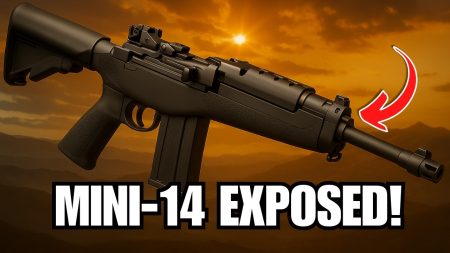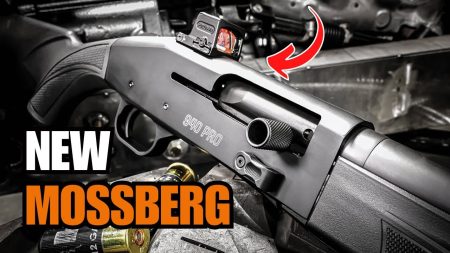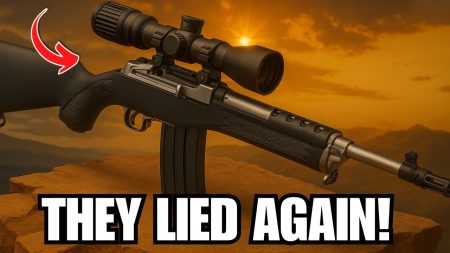“Interesting weapons that fully demonstrate the depths to which the quality of small arms production can fall and yet still produce serviceable weapons.” — U.S. Ordnance Intel report on the Gustloff Volkssturmgewehr
The last year of the Third Reich produced some of the most advanced weapon concepts of the war. At the same time, those final desperate months of the “Thousand Year Reich” also yielded some of the crudest designs ever produced for modern warfare.
Primitiv-Waffen-Programm: A Rifle for the Masses
On October 16, 1944, the Nazi Party announced the formation of the national militia: the Volkssturm. Nazi leaders proposed that Germany’s “People’s Storm” could somehow defend the Reich against an Allied invasion, even while the Wehrmacht and the Waffen SS could not.
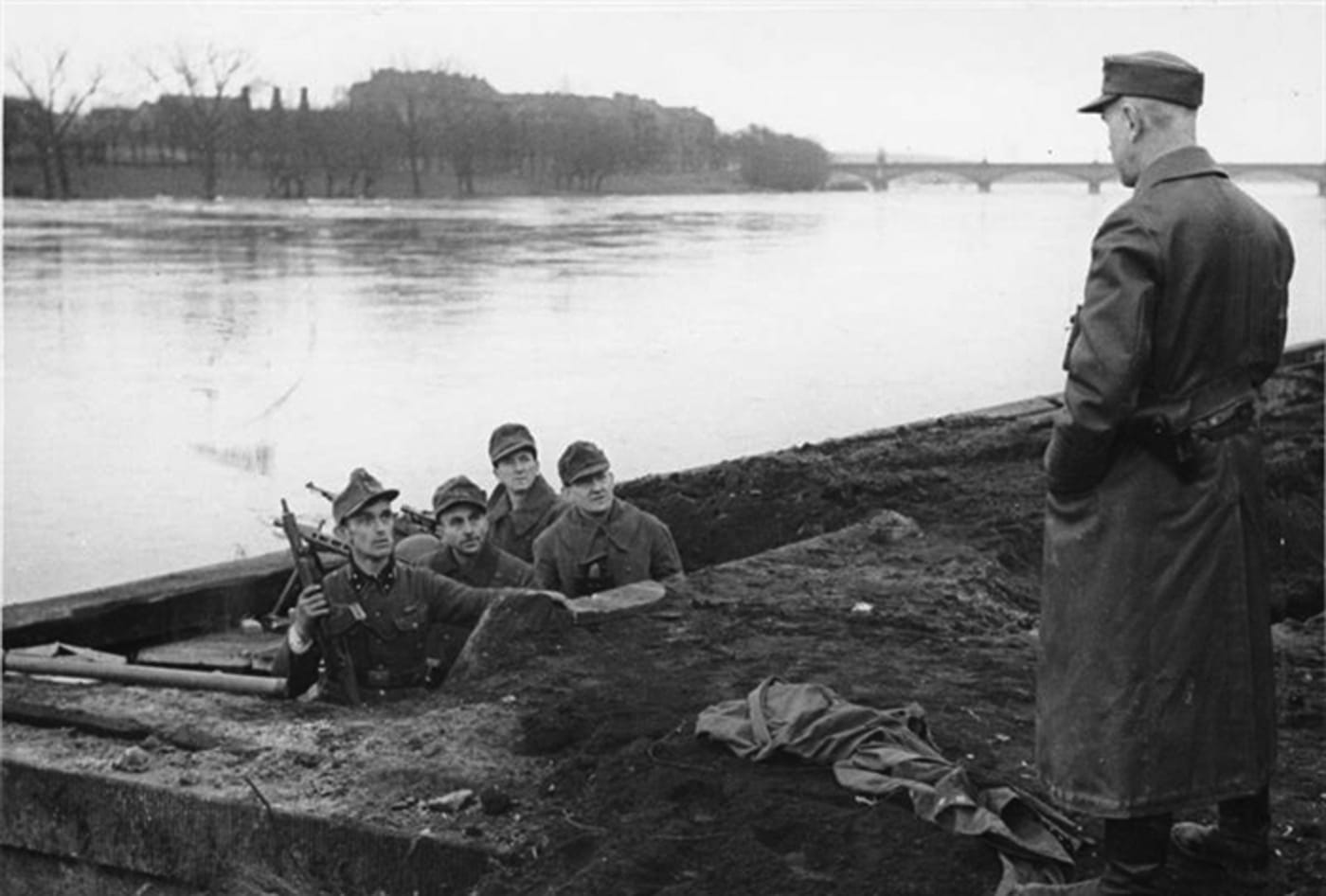
While the enthusiastic recruitment of young boys and older men began in earnest, the Nazi leadership’s ability to equip their newfound militia quickly stalled. Germany’s armament cupboards were bare. Meanwhile, the Wehrmacht did not welcome the Volkssturm as a helpful addition in manpower, but rather as an annoying drain on dwindling resources.
In the U.S. Army report “Military Improvisations During the Russian Campaign”, several German General Staff Officers discussed the impossible logistics of equipping the Volkssturm:
“The Wehrmacht could spare nothing. At the same time, it became more and more obvious that the paramilitary Party formations had hoarded and hidden weapons and ammunition, but in view of the large number of Volkssturm draftees these weapons were of little help. Then, a Party official had the idea of manufacturing simplified Volkssturm rifles with barrels he could “procure” from some factories in Saxony. This plan was also of little consequence. Thus, the whole project of staging an armed levee en masse was doomed from the very outset.”
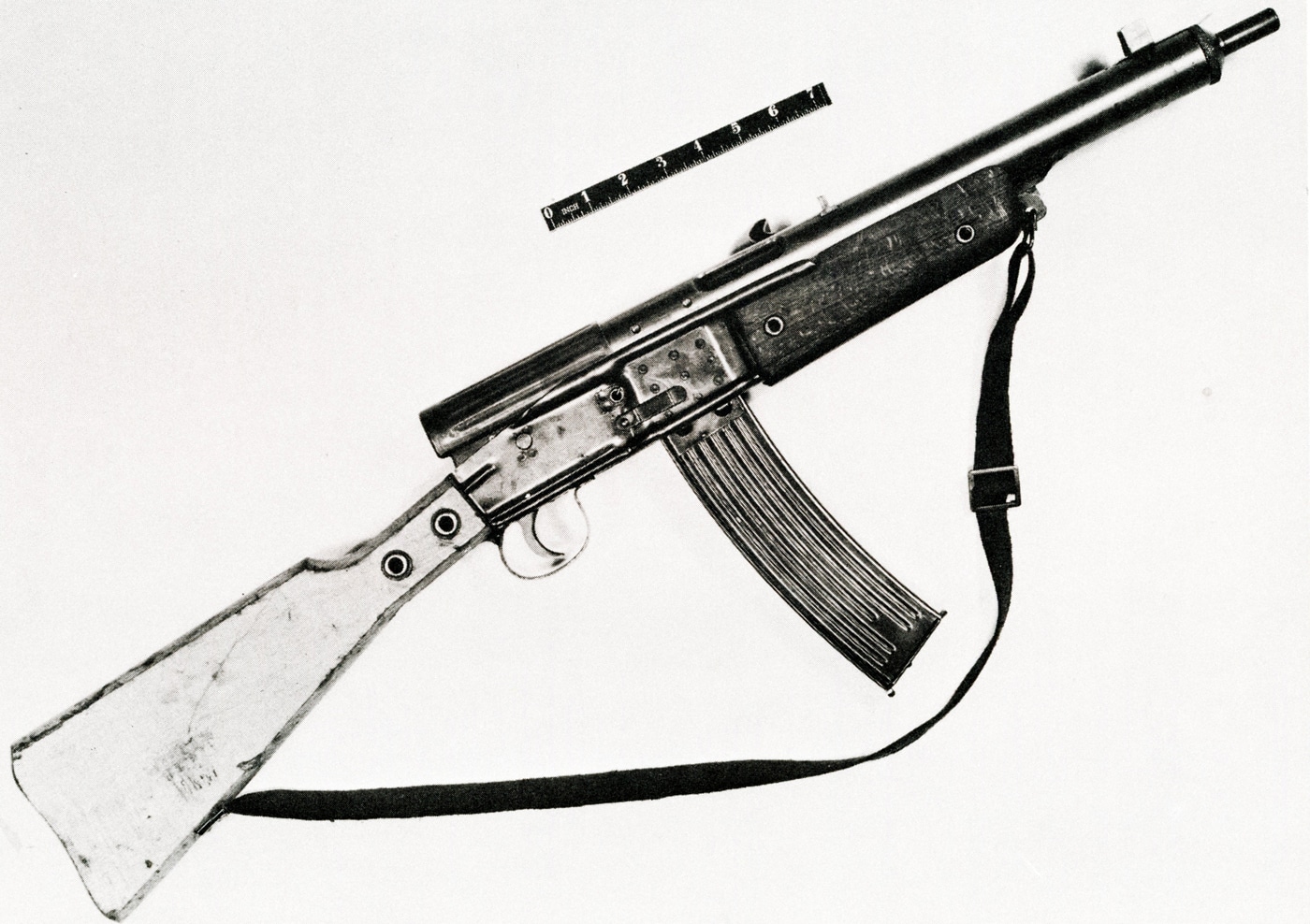
After Allied strategic bombers had devastated much of the Reich’s primary armaments factories, German industry adapted by necessity, and began to employ a series of small manufacturing and assembly shops spread around Germany. By the summer of 1944, the Primitiv-Waffen-Programm (primitive weapons program) was in place to create simple firearms that were quick and cost-effective to produce. Within the auspices of this program, engineer Karl Barnitzke of the Gustloff-Werke designed the “Volkssturmgewehr” in late 1944.
Gustloff Volkssturmgewehr — The People’s Assault Rifle
At first glance, the Gustloff Volkssturmgewehr is like several wartime, second-generation submachine guns — simple weapons made on a tight budget. Barnitzke’s design leveraged many of the wartime production shortcuts and built his semi-automatic carbine around Germany’s new 7.92×33 Kurz round.
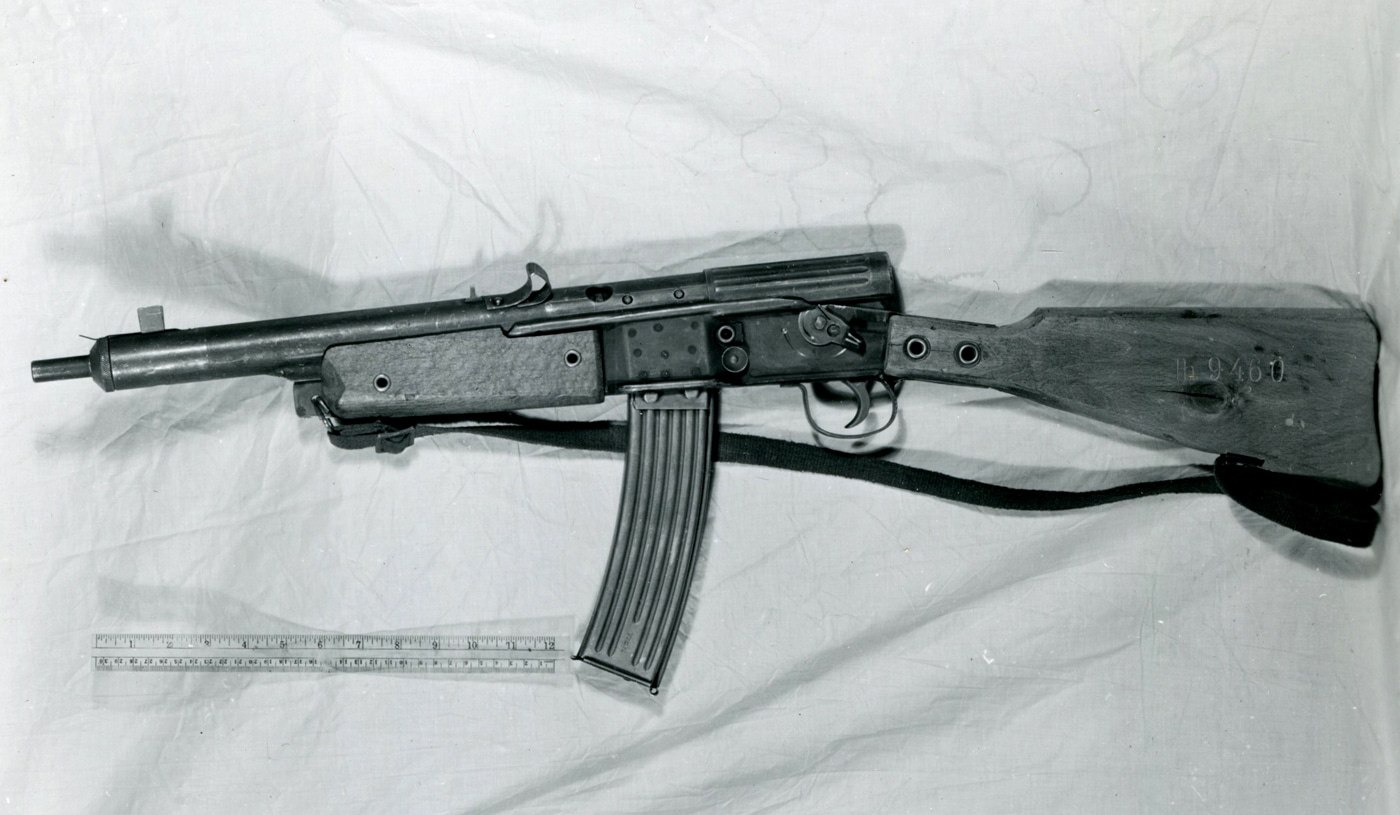
The Gustloff Volkssturmgewehr has been compared to some semi-automatic pistol designs that use a casing and spring that surround the barrel, and the entire casing recoils when the weapon is fired. The gas-delayed blowback action vents the gas through four vents close to the end of the barrel. The bolt remains closed until the gas pressure drops and the next round is chambered.
Even in the authoritarian socialist Third Reich, factories still needed to be paid for their work. For whatever value the Reichsmark still held, Gustloff-Werke’s budget for the new rifle would earn them a profit. Consequently, production focused on simplicity, speed, and the lowest cost possible.
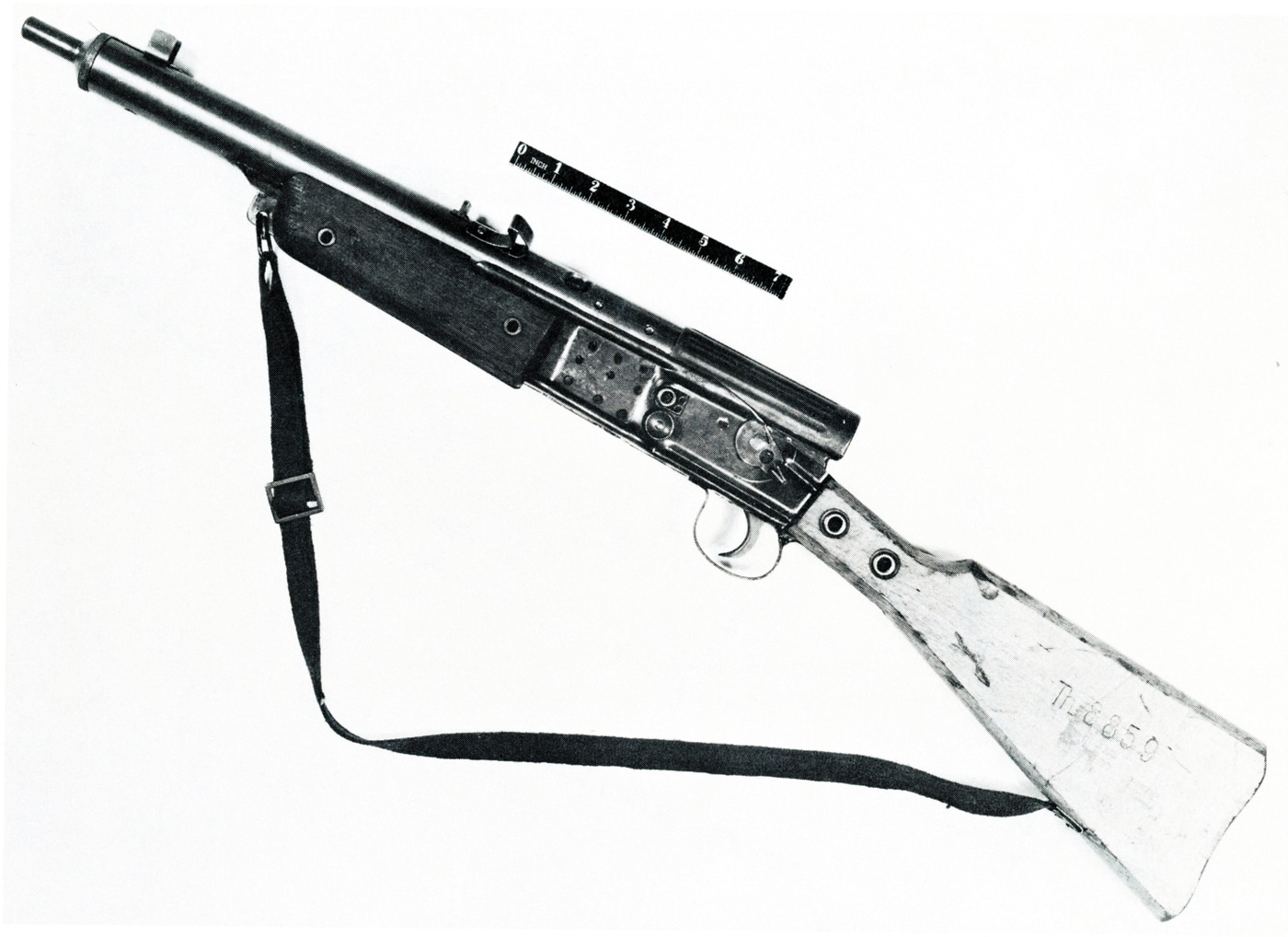
Except for rivets and screws, the Volkssturmgewehr consisted of just 39 metal parts, of which 6 were springs, with 12 parts that required milling, and 21 that could be made by simple stamping alone. The term “crude” cannot be emphasized enough with this rifle. The two halves of the sheet-metal receiver were welded together. The barrel was permanently attached to the receiver, as well as the buttstock and foregrip. The simple, fixed sights were not adjustable.
The following stats on the Gustloff Volkssturmgewehr come from a detailed postwar review conducted at Aberdeen Proving Ground:
- Caliber: 7.92-mm
- Cartridge: 7.92-mm Pistolenmunition 43, or 44. (Later changed to Kurz Patrone 43.)
- Design Type: Retarded blowback (free gas retardation).
- Weight: w/empty magazine 10 lb. 6 oz.
- Overall Length: 34.90″
- Barrel Length: 14.90”
- Number of Grooves: 4
- Direction of Twist: Right
- Type of Fire: Semiautomatic only
- Magazine Capacity: 30 rounds
- Magazine Type: Sheet metal curved and ribbed box type, staggered column, notch attached, with stops. Removable floor plate. Marked “MP 43” or “MP 44”
- Magazine Weight: loaded: 2.07 lb
- Magazine Weight: unloaded. 14 oz
A “Political Weapon”
It is important to remember that the Volkssturmgewehr was never officially adopted by the German military. Thus, there are no Waffenamt (Waa) acceptance markings on the rifle. Intended for use by the Volkssturm, a formation under the control of the Nazi party and not the Wehrmacht, the weapons were procured and then issued under the discretion of a party Gauleiter of a specific political zone. Most of the Volkssturmgewehr were used in combat on the Eastern Front, and therefore very few were captured by American troops.
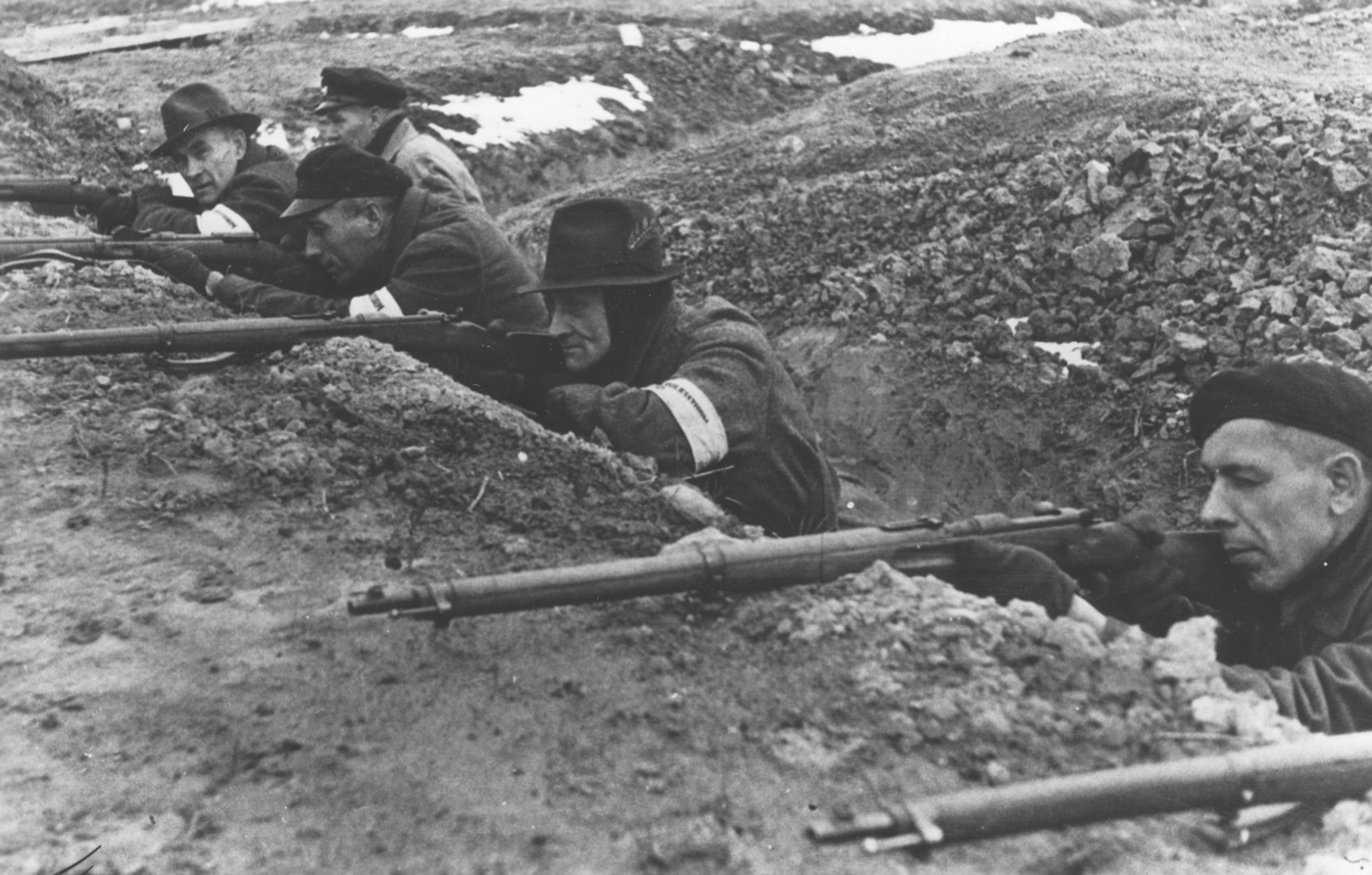
The weapon’s sights were fixed at 100 meters, and accurate shooting beyond that range was not likely. Combat reports about the carbine’s performance are few, but range tests revealed somewhat frequent jamming. Even so, the Volkssturmgewehr is somewhat impressive given the incredibly short timeline for its design and production. A cheap little rifle can shoot a man just as dead as an expensive one.
The following is a U.S. Ordnance Technical Intelligence report covering a Gustloff Volkssturmgewehr captured in May 1945:
24 May 1945
ETO ORDNANCE TECHNICAL INTELLIGENCE REPORT
SUBJECT: Machine Carbine 1944, 7.9 mm Short, German
Observations by: 2nd Lt. M. S. Hochmuth and S/Sgt. H. W. Retz, Ord. Tech.
Intel. Team No. 1. Edited by Capt. P. B. Sharpe, Ord.
Tech. Intel., HQ. Com. Z., ETOUSA
1. GENERAL:
This semi-automatic machine carbine has the same appearance of a machine pistol in the MP 43 group and handles the same 7.9 mm Short cartridge, as the other MP 43 weapons. The Standard MP 43 and 44 magazines may be used. The weapon is poorly constructed and apparently mass produced to achieve a workable weapon with a minimum expense.
2. CONSTRUCTION:
This rifle has the appearance of a machine pistol because of its extremely short barrel and the adoption of the M. P. 43 magazine. The weapon consists of a wooden stock and foregrip, a crudely stamped receiver, a cylindrical slide, a roughly machined barrel, and a riveted trigger group. The slide is a piece of tubing that contains the bolt which is riveted in place. The barrel is fixed to the receiver. It has four holes drilled perpendicular to the axis of the bore approximately 2.32” from the muzzle. A piston is machined on the barrel, and a barrel bushing which provides the gas cylinder holds the slide in position.
3. OPERATION:
There is no locking device in the weapon. The slide with its bolt is held against the face of the chamber by the return spring. A cylindrical barrel adapter is fitted to the slide by interrupted threads and held by a spring clip. This adapter is the gas cylinder that fits over the raised piston on the barrel. On firing the slide recoils, gas enters the cylinder and is compressed between the fixed barrel piston and the front of the adapter. The return spring has been compressed by this action and re-asserting itself, reloads the gun. The function of the gas ports and cylinder is to buff the recoil instead of giving the action semi-automatic operations.
4. STRIPPING:
Place the safe and fire lever at fire and press it beyond the edge of the slide. Punch the lever out of the recess and remove the trigger group. Remove the barrel adapter, and remove the slide and return spring. This disassembles the piece enough for cleaning and 1st and 2nd echelon maintenance.
5. COMMENT:
The design of the weapon indicates its purpose. Though crudely made it could be turned out in great number quickly and cheaply to arm the Volksturm. Its performance is rather poor both in functioning and ease of firing. In the three clips fired (90 rounds), seven jams were cleared. The weapon should not be fired from the hip for powder residue blows upward from the ports in the slide.
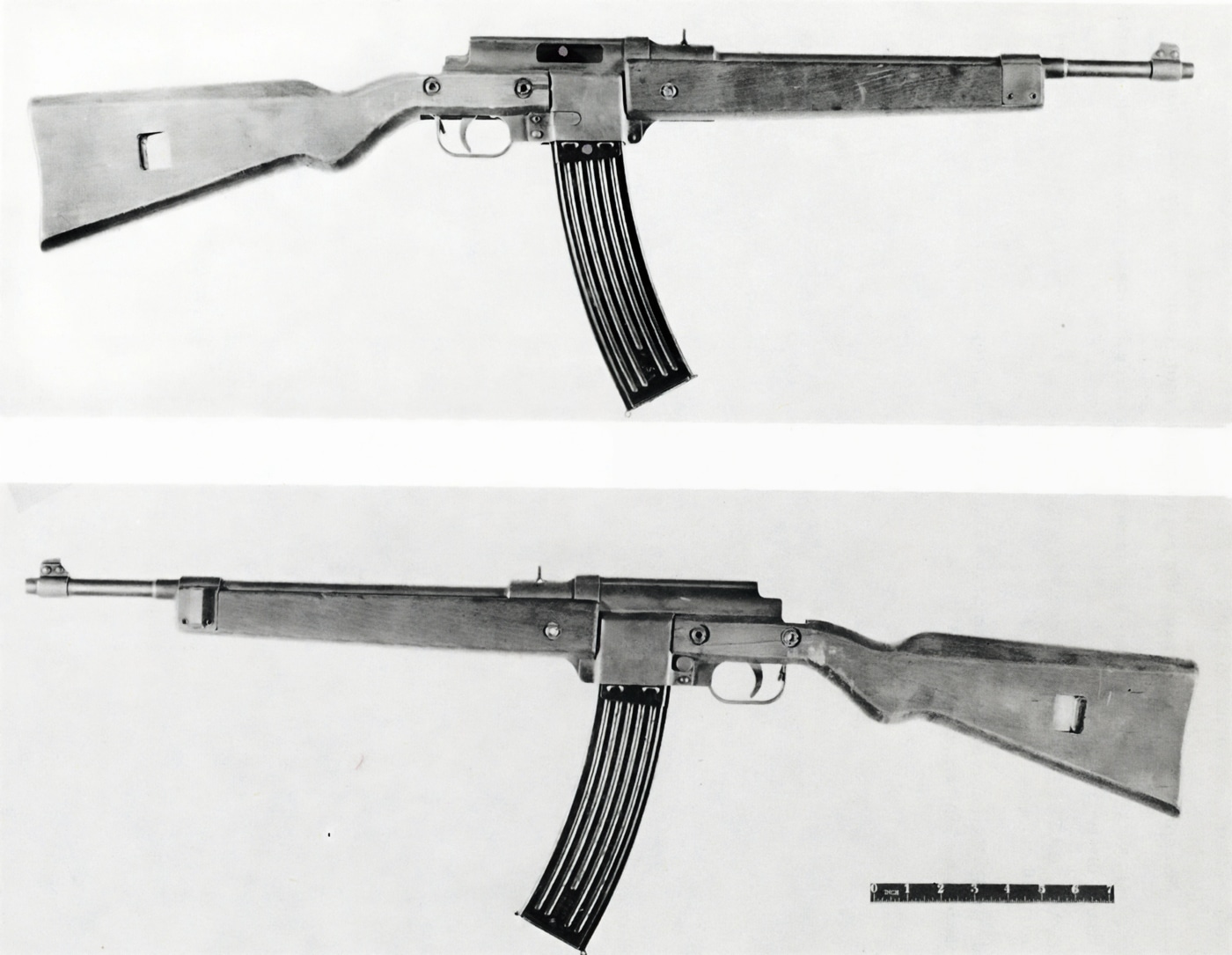
Conclusion
Germany was clearly in dire straits at this point and the war, and no piece of equipment or recruitment drive was going to change that fact. In that context, the Volkssturmgewehr had no chance of success. However, taken out of that context and viewed as a firearm developed and engineered for extreme simplicity and manufacture, it was a remarkable success.
Editor’s Note: Please be sure to check out The Armory Life Forum, where you can comment about our daily articles, as well as just talk guns and gear. Click the “Go To Forum Thread” link below to jump in and discuss this article and much more!
Join the Discussion
Read the full article here


